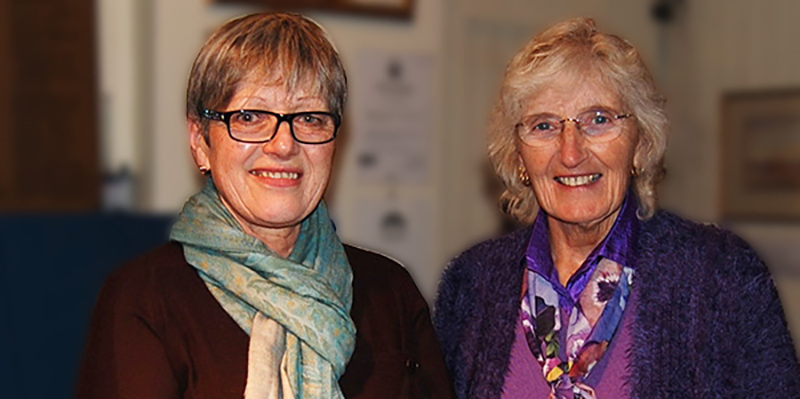Rye’s claims to fame are constantly changing. While many Ryers probably have some idea of the high esteem in which Tunbridge Ware is held, few probably appreciate just how distinctive, beautiful, skilful and well-regarded a craft its Rye offshoot once represented. The last person to practise the painstaking production of Tunbridge Ware did it in Rye, where it was called Rye Mosaics, in a studio on the site of what is now the entrance to Jarretts Close on Market Road. He was Thomas Littleton Green (1892-1959) and his granddaughter, Vivienne Littleton Challans shared insights, photos and examples of his work at Rye Museum on Tuesday evening (February 10).
The audience learnt how Lady Maud Warrender of Leasam House introduced an appreciative Queen Mary to Rye Mosaics and about the high praise the firm received at the 1932 Ideal Home Exhibition. Though the building and its stock were destroyed by a firebomb in 1939, it did survive as The Glue Pot on Ferry Road for some further years, providing prized pieces for Rye visitors and many retail outlets.
It is hard to know what aspect of Rye Mosaics’ history is the most impressive: the use of up to 300 different woods; the 97 different designs — butterflies and parrots, Rye’s windmill and the St Mary’s Church clock with its quarter boys; the number — sometimes in their thousands — of tiny pieces of different woods in a single object, the woods all retaining their natural colours, even green, all cut, shaped and glued by hand with the help only of a tiny saw, a lathe and double boiler for the glue, with long drying stages between; the number of layers and veneers; the huge range of items – beads, penholders, tea caddies, stamp boxes, floral bands, picture frames, brooches, mirrors, yoyos, trays . . . some of which are in Rye Museum’s East Street collection.
Fortunately, those who missed the event – as well as those who came and still want to know more – can read here an article written by Vivienne Challans for the Rye Museum website.
Photo: Sarah Cooper



